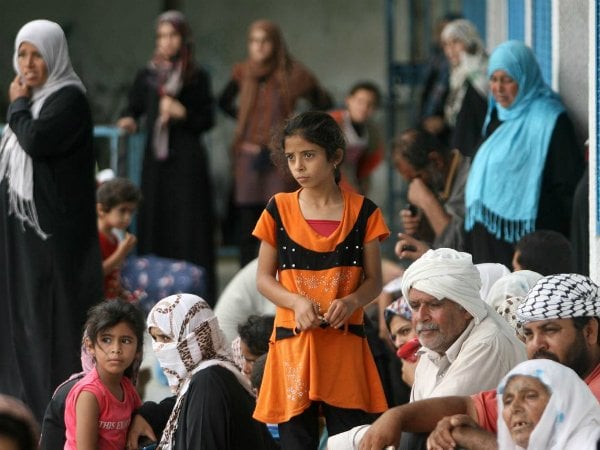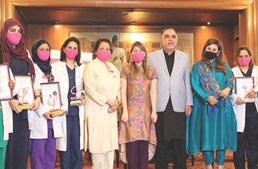GAZA: The United Nations agency for Palestinian refugees was under pressure after members of its personnel were accused of taking part in the attacks that occurred on October 7. At the same time, violence in Gaza caused more people to escape southward towards the border with Egypt.

In response to the growing disagreement, Israeli Foreign Minister Israel Katz demanded that Philippe Lazzarini, the head of the United Nations Relief and Works Agency (UNRWA), step down from his position. Additionally, other countries suspended their financial support.
On Friday, the agency announced that it had terminated many employees due to Israel’s allegations, which were not mentioned, and it promised to conduct a comprehensive investigation.
“Mr. Lazzarini, please resign,” Katz declared late on Saturday night on the social networking platform X in response to a post made by the head of the United Nations Relief and Works Agency (UNRWA) warning that the reduction in financing meant the organization’s operation in Gaza was on the verge of collapsing.
Katz had previously stated that the United Nations Relief and Works Agency (UNRWA) “must be replaced with agencies dedicated to genuine peace and development” in the process of reconstructing Gaza following the bloodiest war in the region.
The United States of America, which announced that it has blocked additional financing to the agency due to the allegations, was followed by a number of donors on Saturday, including Germany, Britain, Italy, Australia, and Finland.
“Threats” made by Israel against the United Nations Relief and Works Agency (UNRWA) were condemned by Hamas on Saturday. Hamas also urged the United Nations and other international organizations not to “cave in to the threats and blackmail.”
An offensive launched by the Israeli military in response to attacks carried out by Hamas on October 7 has resulted in the deaths of at least 26,257 Palestinians, the majority of whom were women and children.
Protesters in Arlington, Virginia, on January 27, 2024, cry for a truce in the conflict between Israel and Hamas as they demonstrate in front of the residence of the United States Secretary of State Antony Blinken during the conflict. THE AFP PHOTO
Protesters in Arlington, Virginia, on January 27, 2024, cry for a truce in the conflict between Israel and Hamas as they demonstrate in front of the residence of the United States Secretary of State Antony Blinken during the conflict. THE AFP PHOTO
As a result of the attack that took place on October 7 by the resistance organization, about 1,140 Israeli settlers had been killed.
Israel claims that around 132 of the hostages are still in Gaza, including the bodies of at least 28 people who were killed while being held captive. The fighters allegedly took approximately 250 hostages.
After the United Nations Relief and Works Agency (UNRWA) condemned tank shelling that it said had hit a shelter for displaced persons in Gaza’s main southern city of Khan Yunis on Wednesday, relations between Israel and UNRWA, which had been tight for a long time, dramatically deteriorated.
The report stated that thirteen individuals had been killed as a result of the tank shelling, and that tens of thousands of people who had been displaced had registered at the shelter.
The Israeli military has stated that it is investigating the likelihood that the incident was a “result of Hamas fire,” but it has also stated that it will conduct a comprehensive examination.
Currently, the focus of its military effort is on Khan Yunis, which is the hometown of Yahya Sinwar, the commander of Hamas in Gaza. On Saturday, it reported that a large number of militants had been killed in Khan Yunis.
According to Hamas and Islamic Jihad’s armed wings, there were violent battles throughout the night in and around Khan Yunis. These skirmishes included mortar rounds fired by militants at Israeli tanks.
According to them, rockets were also fired into southern Israel, and there was fighting in a number of neighborhoods within Gaza City and further north.
The health ministry, which is operated by Hamas, released a statement that called the health crisis in the besieged region as “catastrophic.” The statement stated that at least 129 people were killed in Israeli attacks earlier in the night.
The Israeli Prime Minister Benjamin Netanyahu, who is coming under increasing pressure from his own people on his handling of the crisis, has reaffirmed his commitment to do away with Hamas in Gaza, which is now under siege.
During a statement that was shown on television on Saturday, he made the following comment: “If we do not eliminate Hamas terrorists, the next massacre is only a matter of time.”
According to statements made by experts to AFP, Netanyahu’s unwavering commitment to eradicate Hamas is increasingly considered as incompatible with the return of the hostages that are being held in Gaza.
On Saturday, protesters gathered once more in Tel Aviv, the commercial heart of Israel, as well as in the vicinity of Netanyahu’s mansion in Caesarea, an expensive seaside resort. They carried posters depicting the hostages and banners that demanded that they be brought back home.
The dispute between Israel and the United Nations Relief and Works Agency (UNRWA) is a direct result of a decision made by the United Nations International Court of Justice on Friday, which stated that Israel must take measures to avoid any acts of genocide that may occur during the conflict and permit further help to be sent.
A meeting of the United Nations Security Council is scheduled to take place on Wednesday in order to establish “binding effect” for the decision, which did not include a request for a ceasefire.
The diplomatic efforts that have been made to find a settlement have also picked up speed.
William Burns, the head of the Central Intelligence Agency, is scheduled to meet with his counterparts in Israel and Egypt, as well as the prime minister of Qatar, in Paris in the near future in order to establish a truce, according to a security source who spoke to AFP.
Under the terms of a cease-fire that lasted for one week in November, Hamas was able to free scores of hostages in exchange for Palestinian captives that were being held by Israel.
According to an article published by the New York Times on Saturday, the United States-led negotiations were getting closer to reaching an agreement in which Israel would cease its attack in Gaza for around two months in exchange for the release of more than one hundred other prisoners.
It was reported that negotiators had established a draft deal, which would be discussed in Paris on Sunday, according to officials from the United States who remained anonymous.
According to the United Nations, the majority of Gaza’s estimated 1.7 million displaced residents have collected in Rafah, which is located near to the Egyptian border. Palestinians are moving further south from Khan Yunis towards Rafah.
“Conditions of desperation conducive to a complete breakdown in order” are the conditions that many of the displaced people are living in, according to Ajith Sunghay of the United Nations Human Rights Office.
In Rafah, where the threat of shelling is still present, photographs obtained by AFP showed people wading through water that was up to their ankles near plastic shelters.
With regard to surgical capabilities, the Nasser Hospital in Khan Yunis was described as “virtually non-existent” by the humanitarian organization known as Doctors Without Borders (MSF).
The Palestinian Red Crescent Society reported that the Al-Amal hospital was also “under siege with heavy gunfire” at the time.










































